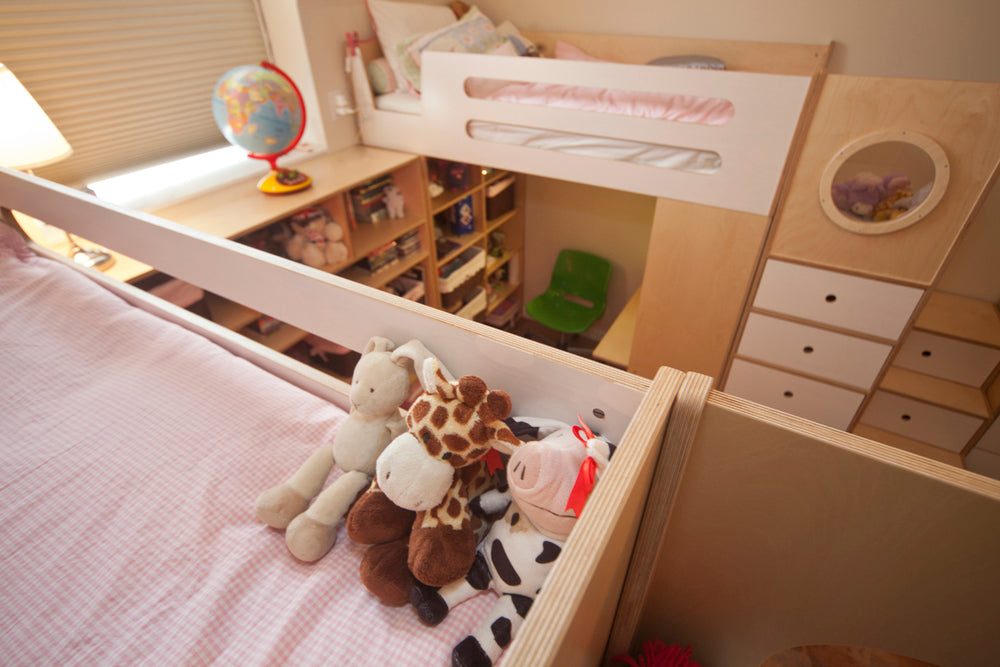Your Cart is Empty
Showroom open on weekends - by appointment
Showroom open on weekends - by appointment

For growing families, a bunk bed is a great way to free up floor space in a small shared room. However, instead of seeing it as a space-saver, kids will be excited to see their bed resembling playground equipment. This type of sleeping arrangement can make most parents nervous, especially since the top bunk can seem high for a small child.
The good news is, bunk-bed-related fatalities are extremely rare. However, a study conducted in 2008 found that between 1990 and 2005 in the United States, approximately 36,000 kids per year were treated for bunk-bed-related injuries.
To minimize these risks, parents and kids must be aware of bunk and loft bed precautions and safety.
Make sure that your bunk bed complies with U.S. Consumer Product Safety Commission standards. Some basic guidelines are:
Guardrails - The height from the top of the mattress to the top of the rail should be a minimum of 5". Rails must also be continuous on all sides of the bed.
Openings - Gaps, openings and holes must either be small enough that it doesn't allow a child's head, limbs or torso to pass through or big enough that it allows it to pass through completely. Safety standards state that openings should be 6" wide or less or 9" wide or more, and never in between.
In the Corner - Ideally bunk beds should be place against two perpendicular walls, providing support and preventing falls.
Watch out for Low Ceilings - The height from the top of the mattress to the ceiling is important so that the child doesn't hit their head when sitting upright in the top bunk. Do not place the bunk bed underneath hanging lights and ceiling fans.
No Playing and Jumping - Educate your kids on bunk bed safety. Teach them to refrain from jumping and playing on the bunk bed particularly on the upper bunk.
Children Under 6 Should Not Sleep On the Upper Bunk - Safety standards recommend that a child under 6 years of age, not sleep on the upper bed. However, if your child is a restless sleeper then the upper bunk may not be a good fit even if he or she is much older.
Do Not Hang Scarves, Jump Ropes, and Belts - Although the most common bunk bed injuries are concussions that result from falls, the deadliest are from suffocation from strangulation.
By ensuring that the bunk bed is sturdy and located in the right spot and your kids know the safety rules, you will not lose sleep over your kids' bunk bed.